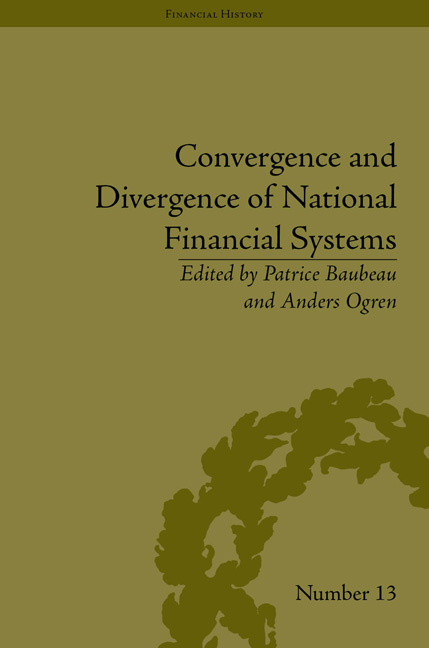 Convergence and Divergence of National Financial Systems
Convergence and Divergence of National Financial Systems from Part IV - Convergence and Monetary Constraint
Introduction
This Italian experience is very interesting from the perspective of analysing divergence and convergence under the Gold Standard (GS). This experience shows the paradox between the common thought on GS (an automatic rule to avoid inflation) and an Italian reality where, in spite of gold convertibility, the economy suffered inflation that ended in an economic crisis.
Common wisdom associates nineteenth-century price stability with the GS rule. This common wisdom is sustained by a change in the perception of the notion of inflation. In fact, price stability does not have the same meaning today as it did in the past.
As a matter of fact, the link between nineteenth-century price stability and GS rules is defined more by the instability of the twentieth century than by its own stability. The Italian case illustrates this point: Italy could participate at the same time in the GS and still experience uncontrolled monetary creation. As such, the GS was not necessarily a set of rules conveying with it the degree of convergence most commonly assumed. Italian monetary difficulties were the direct consequences of the endless financial needs of the government, and no rule was strong enough to reign in the drive for governmental expenditures.
This chapter will show the link between the monetization of the national debt and the destabilization of the Italian banks of issue, and will explain the monetary origins of the 1893 crisis. The main argument rests on the fact that government intervention in the banking industry is one of the major factors of the crisis. The focus on this specific aspect of the crisis does not mean that there was just only one origin of this crisis. Nevertheless the return to the GS did not prevent Italian economy from monetary creation because the government could not meet the commitments of an equilibrate budget. Moreover, the financial commitments of the GS had led the Italian Government to take new measures to prevent a gold flee that worsened the crisis.
To save this book to your Kindle, first ensure [email protected] is added to your Approved Personal Document E-mail List under your Personal Document Settings on the Manage Your Content and Devices page of your Amazon account. Then enter the ‘name’ part of your Kindle email address below. Find out more about saving to your Kindle.
Note you can select to save to either the @free.kindle.com or @kindle.com variations. ‘@free.kindle.com’ emails are free but can only be saved to your device when it is connected to wi-fi. ‘@kindle.com’ emails can be delivered even when you are not connected to wi-fi, but note that service fees apply.
Find out more about the Kindle Personal Document Service.
To save content items to your account, please confirm that you agree to abide by our usage policies. If this is the first time you use this feature, you will be asked to authorise Cambridge Core to connect with your account. Find out more about saving content to Dropbox.
To save content items to your account, please confirm that you agree to abide by our usage policies. If this is the first time you use this feature, you will be asked to authorise Cambridge Core to connect with your account. Find out more about saving content to Google Drive.